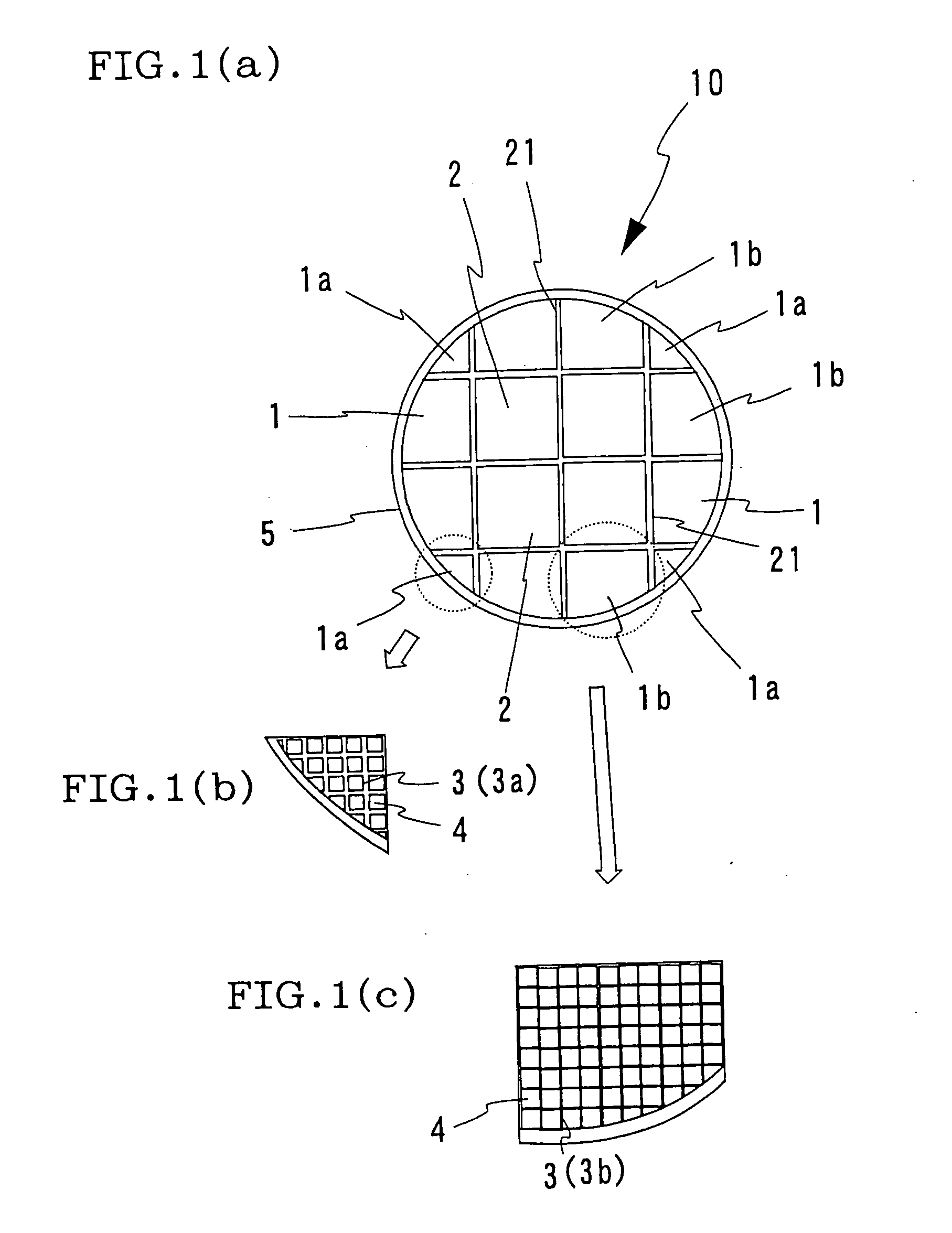Honeycomb structural body
a honeycomb structure and honeycomb technology, applied in the field of honeycomb structure, can solve the problems of insufficient performance, inability to obtain sufficient performance, and large increase in thermal capacity and pressure loss, so as to achieve large compression strength, high purification performance, and large change in density of partition walls
- Summary
- Abstract
- Description
- Claims
- Application Information
AI Technical Summary
Benefits of technology
Problems solved by technology
Method used
Image
Examples
example 1
[0057] Mixed powder containing 75% by weight of SiC powder and 25% by weight of metal Si powder was prepared as a ceramic material. 6 parts by weight a binder, which was composed of methyl cellulose and hydroxypropoxyl methyl cellulose, 0.8 part by weight of a surface-active agent, and 22 parts by weight of water were added to 100 parts by weight of the resultant blended powder. The resultant was kneaded in a kneading machine, thereby a clay having plasticity was obtained.
[0058] Next, the clay was subjected to extrusion forming to form the honeycomb segments 1a, 1b, and 2 having shapes corresponding to the shapes of the respective pieces of 16 portions obtained by dividing the honeycomb structure 10 having an cylindrical outside appearance as shown in FIGS. 1(a) and 2. At the time, in all the four honeycomb segments 1a in which the partition walls in the partition wall length direction X on a cross section perpendicular to the fluid passage direction of a cell formed an angle of 20...
PUM
| Property | Measurement | Unit |
|---|---|---|
| Angle | aaaaa | aaaaa |
| Angle | aaaaa | aaaaa |
| Angle | aaaaa | aaaaa |
Abstract
Description
Claims
Application Information
 Login to View More
Login to View More - R&D
- Intellectual Property
- Life Sciences
- Materials
- Tech Scout
- Unparalleled Data Quality
- Higher Quality Content
- 60% Fewer Hallucinations
Browse by: Latest US Patents, China's latest patents, Technical Efficacy Thesaurus, Application Domain, Technology Topic, Popular Technical Reports.
© 2025 PatSnap. All rights reserved.Legal|Privacy policy|Modern Slavery Act Transparency Statement|Sitemap|About US| Contact US: help@patsnap.com



